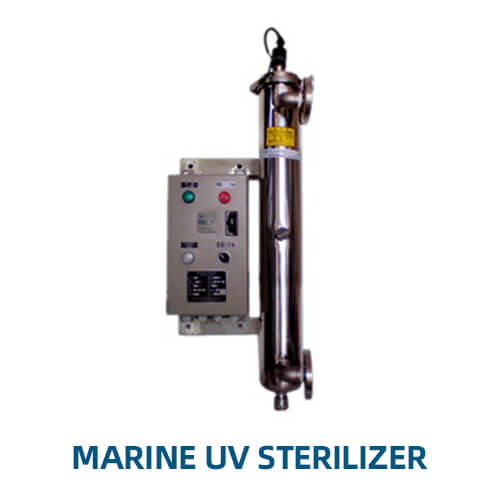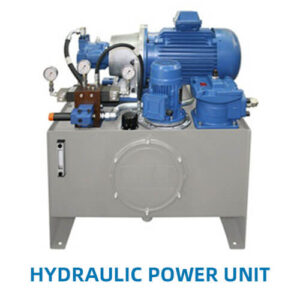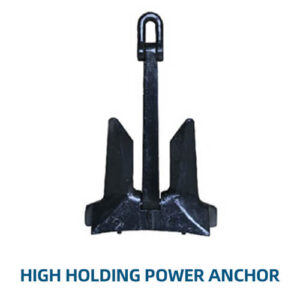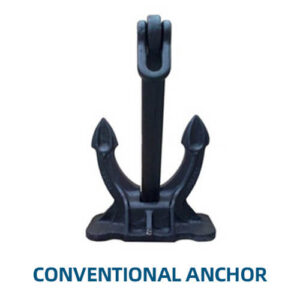Key Features of Marine UV Sterilizers:
- UV Technology:
- UV-C Light: Marine UV sterilizers utilize UV-C light, which has a wavelength of 254 nanometers, to destroy the DNA or RNA of microorganisms, rendering them incapable of reproduction and infection.
- High-Efficiency Lamps: The sterilizer includes high-efficiency UV lamps designed to provide maximum UV output and ensure effective disinfection.
- Design and Construction:
- Marine-Grade Materials: The sterilizer is constructed from materials that resist corrosion and damage from the marine environment, such as stainless steel or UV-resistant plastics.
- Compact Size: Marine UV sterilizers are often designed to be compact and lightweight, making them suitable for installation in confined spaces on boats and ships.
- Flow Chamber: The water flows through a chamber where it is exposed to UV light. The design ensures optimal exposure time for effective disinfection.
- Performance Characteristics:
- Effective Disinfection: UV sterilizers are highly effective at killing a wide range of microorganisms, including bacteria, viruses, and protozoa, without introducing chemicals into the water.
- Low Maintenance: UV sterilizers require minimal maintenance, mainly involving the periodic replacement of UV lamps and cleaning of the quartz sleeve that protects the lamp.
- Applications:
- Drinking Water: Ensures that water used for drinking and cooking is free from harmful microorganisms.
- Aquariums and Fish Tanks: Used to maintain water quality and prevent the growth of harmful pathogens in marine and freshwater aquariums.
- General Sanitation: Can be used to disinfect water in various marine applications, including cleaning water systems and equipment.
- Installation and Operation:
- Installation: Marine UV sterilizers are typically installed in the water filtration system or directly in the water supply line. They should be installed according to manufacturer guidelines to ensure optimal performance.
- Operation: The unit operates automatically when water flows through it, with the UV lamps activated to provide continuous disinfection.
- Maintenance and Care:
- Lamp Replacement: UV lamps have a limited lifespan and should be replaced regularly, usually every 12 months or according to the manufacturer’s recommendations.
- Quartz Sleeve Cleaning: The quartz sleeve protecting the UV lamp should be cleaned periodically to prevent buildup that can reduce UV transmission.
- System Inspection: Regularly inspect the sterilizer for signs of wear or damage and ensure that all components are functioning correctly.
- Safety Considerations:
- UV Light Exposure: Direct exposure to UV-C light can be harmful. Ensure that the sterilizer is properly shielded and that safety precautions are followed during maintenance.
- Water Flow: Ensure proper water flow rates are maintained to achieve effective disinfection. Follow the manufacturer’s specifications for flow rates and operating conditions.
Advantages of Marine UV Sterilizers:
- Effective Disinfection: Provides reliable and chemical-free disinfection of water, ensuring safety and purity.
- Low Operating Costs: Requires minimal ongoing costs, with primary expenses being lamp replacements and occasional maintenance.
- Environmental Friendly: Does not introduce chemicals or byproducts into the water, making it an eco-friendly option for water purification.
Considerations for Marine UV Sterilizers:
- Power Supply: Ensure the vessel or platform has a suitable power supply to operate the UV sterilizer.
- Maintenance Schedule: Adhere to the recommended maintenance schedule to ensure optimal performance and longevity of the unit.
Marine UV Sterilizers are an essential component for ensuring safe and clean water in marine environments. They offer a reliable, efficient, and environmentally friendly solution for water disinfection, making them ideal for use on boats, ships, and offshore platforms.






